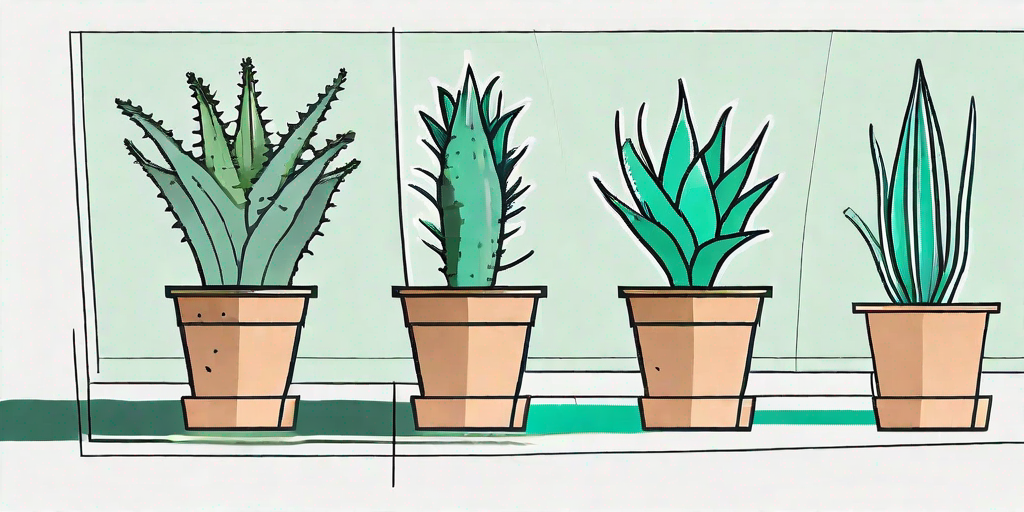
Ah, the humble aloe plant. Renowned for its healing properties, it's a staple in many homes. But what happens when your aloe plant starts looking a little...well, less than lively? Fear not, dear reader! In this comprehensive guide, we'll explore the art of aloe resuscitation.
Understanding Your Aloe Plant
Before we delve into the nitty-gritty of plant revival, it's important to understand your aloe plant. Aloe plants are succulents, which means they're more likely to forgive you if you forget to water them for a week (or two...or three). However, they're not invincible. Overwatering, poor light conditions, and incorrect soil can all lead to a sad, droopy aloe plant.
So, how can you tell if your aloe plant is in distress? A healthy aloe plant should have plump, green leaves. If your plant's leaves are thin, brown, or droopy, it's time to roll up your sleeves and get to work.
Reviving Your Aloe Plant: The Basics
Now that we've covered the basics of aloe plant health, let's dive into the revival process. Remember, patience is key here. Your plant didn't become unhealthy overnight, and it won't recover overnight either.
First things first, let's assess the damage. If your plant has brown or yellow leaves, it's likely suffering from overwatering. On the other hand, if the leaves are thin and curled, your plant is probably thirsty.
Overwatered Aloe Plant
If your aloe plant is suffering from overwatering, the first step is to stop watering it. I know, it sounds counterintuitive, but trust me on this one. Your plant needs time to recover.
Next, remove any rotten or damaged leaves. This will help prevent the spread of disease. Finally, consider repotting your plant in fresh, well-draining soil. This can help prevent future overwatering issues.
Underwatered Aloe Plant
If your aloe plant is underwatered, the solution is simple: water it. However, be careful not to overcompensate by flooding your plant. A good rule of thumb is to water your plant thoroughly, then wait until the soil is completely dry before watering again.
Additionally, consider moving your plant to a brighter location. Aloe plants love sunlight, and a sunny spot can help your plant recover more quickly.
Advanced Aloe Plant Care
Once you've addressed the immediate issues, it's time to think about long-term care. After all, we don't just want your aloe plant to survive—we want it to thrive!
First, consider the pot your aloe plant is in. Aloe plants prefer pots with good drainage, as this helps prevent overwatering. Additionally, aloe plants like to be a bit snug in their pots, so avoid the temptation to put your small aloe plant in a large pot.
Fertilizing Your Aloe Plant
While aloe plants don't require much fertilizer, a little bit can go a long way. Consider using a slow-release fertilizer designed for succulents. This can provide your plant with the nutrients it needs to grow strong and healthy.
However, be careful not to over-fertilize your plant. Too much fertilizer can lead to salt buildup in the soil, which can harm your plant. As with watering, less is often more when it comes to fertilizing aloe plants.
Pruning Your Aloe Plant
Pruning is an important part of aloe plant care. Regularly removing dead or damaged leaves can help your plant direct its energy towards new growth. Plus, it keeps your plant looking neat and tidy.
To prune your aloe plant, simply cut off the leaf at the base using a clean, sharp knife. Be sure to wear gloves, as aloe sap can be irritating to the skin.
FAQs
- How often should I water my aloe plant?
It depends on the conditions your plant is in. Generally, you should water your aloe plant when the soil is completely dry. This can be anywhere from once a week to once a month.
- Can I use regular potting soil for my aloe plant?
While you can use regular potting soil, your aloe plant will be happier in a soil mix designed for succulents. These mixes have better drainage, which can help prevent overwatering.
- My aloe plant has brown spots. What should I do?
Brown spots can be a sign of overwatering or sunburn. If your plant is in a sunny location, try moving it to a spot with indirect light. If you've been watering your plant frequently, cut back on watering and see if the condition improves.
Reviving an aloe plant may seem like a daunting task, but with a little patience and care, your plant can bounce back. Remember, the key to a healthy aloe plant is balance. Too much or too little of anything—water, sunlight, fertilizer—can lead to an unhappy plant. But with these tips and tricks, you'll be well on your way to becoming an aloe plant whisperer. Happy gardening!















